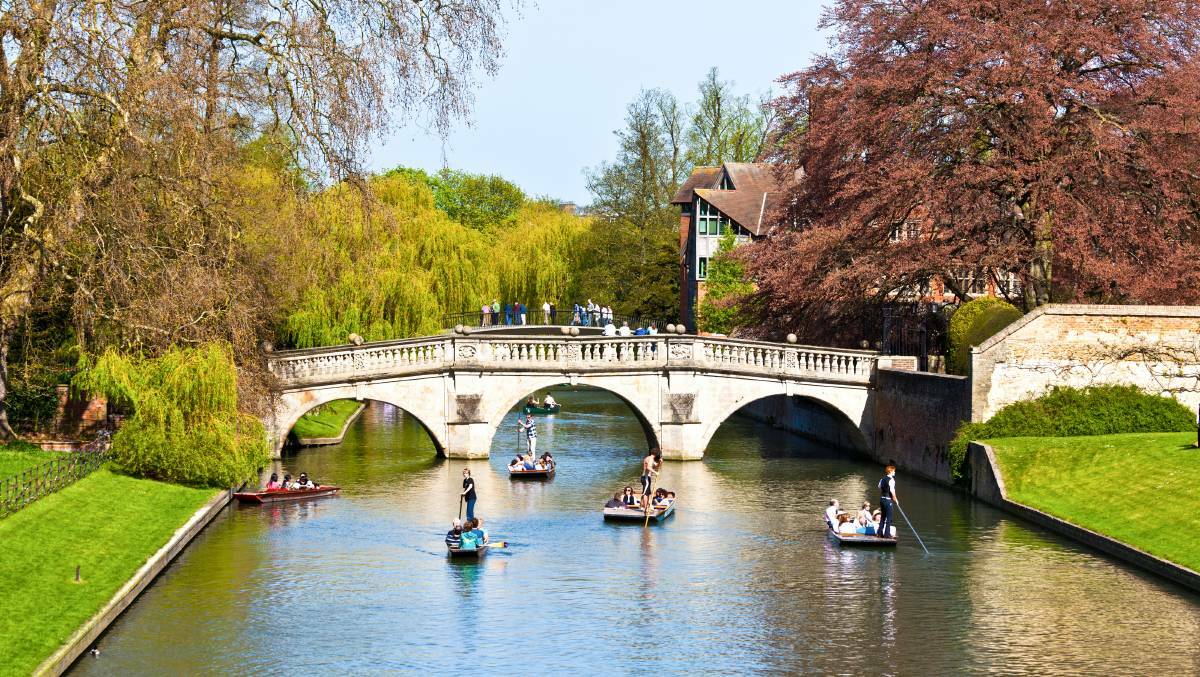As universities turn to virtual teaching in this time of lockdown, it’s a great opportunity to visit their hallowed halls from the comfort of your lounge room.
Create a free account to read this article
$0/
(min cost $0)
or signup to continue reading
Anyone can boot up and stroll around a university’s virtual website, inquiring about courses and wandering further afield.
A virtual tour of the University of Cambridge is a great starting point to plan a future tour of the rest of Cambridge.
According to the university’s website, Cambridge is the fifth oldest university in the world (Bologna is the oldest).
The university has its roots in the early 1200s, when scholars fled “hostile townsmen” in Oxford, settling in hostels where they were taught by masters.
Tourists flock to the university’s first college building, King’s, founded in 1441 by Henry VI (who also founded Eton).
Visit the chapel, where the internationally acclaimed King’s College Choir practises and performs beneath the building’s fan-vaulted stone ceiling.
Stroll around the gardens and feed the ducks on the Fellows’ Garden, a series of paddocks up until the early 1800s, and today a Victorian-designed green with rare and exotic flora.
Henry VI’s grand-nephew, Henry VIII, is also closely associated with the university, having founded its other great college, Trinity.
Henry VIII wanted to found an institution which would educate world leaders, and one of his last acts as king, in 1546, was to merge King’s Hall with Michaelhouse to create Trinity.

His vision was fulfilled over the centuries, with its alumni through the ages including six British prime ministers, two Indian prime ministers and the current prime minister of Singapore, Lee Hsien Loong.
These days, you can take a virtual tour of Trinity’s Wren Library, opened in 1695 and designed by Sir Christopher Wren.
The Bridge of Sighs is another key attraction at the university, crossing the River Cam next to St John’s.
Named after the famous bridge in Venice, the bridge was built in the early 1800s to connect the main grounds with St John’s student accommodation, built on the west side of the Cam.
This covered bridge has been used as a backdrop for many films, including The Theory of Everything (2014).
The Mathematical Bridge, which dates to 1748, traverses the Cam at Queen’s College.
For its time, the bridge was an engineering feat, a wooden construction spanning 15 metres, consisting of six short timbers jointed end-to-end.
It is a plain but historic construction best seen from a punt on the River Cam.
Punting remains a favourite way of seeing the university and the rest of Cambridge.
You can hire these flat-bottomed boats from a number of kiosks along the river and either take the punting pole yourself or hire a “chauffeur”.
The River Cam wends through the heart of Cambridge, with many students punting to the nearby village of Grantchester, made famous by the War poet Rupert Brooke and home to politician-turned-bestselling novelist Jeffrey Archer.
Cambridge is built on The Fens, a flat, coastal plain in middle England considered holy because of the many former monasteries, which are now cathedrals and churches, built there. The city has its origins in Roman times; a fort from this era is still visible on Castle Hill, north-west of the city’s centre.
These days, Cambridge is home to 124,000 residents with three shopping malls and laneways lined with cafes, pubs and boutiques.
While in Cambridge drop into The Pint Shop and order a stilton and vegetable pie or pork scotch egg.

The upmarket student brasserie, in Peas Hill, was once the home of writer E.M Forster.
Take a stroll around Cambridge Market, a square of stalls in the city centre which is open seven days and sells everything from pies and fresh produce to records, second-hand bikes and mobile phones and accessories.
Worth a visit is Cambridge Botanic Garden, a teaching and learning site which holds more than 8000 plant species from across the globe.
The garden rivals Kew, with tropical glasshouses, British wildflowers and a tea shop close to the entrance, in Bateman Street.
Cambridge is well equipped for cyclists, with dedicated cycle parks and racks. A fifth of all city journeys are made by bicycle, with the traditional bike with wicker basket on the front handles an iconic feature of Cambridge.
When travel restrictions have eased and you are able to visit Cambridge, fly into Stansted Airport, about a 30-minute drive into the city centre. All major airlines fly into Stansted, which has frequent trains and coaches to Cambridge and beyond.




